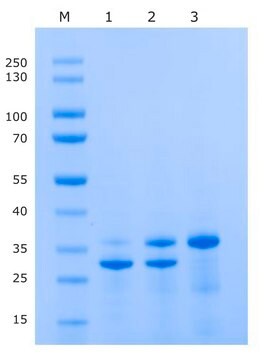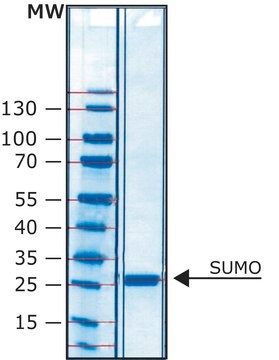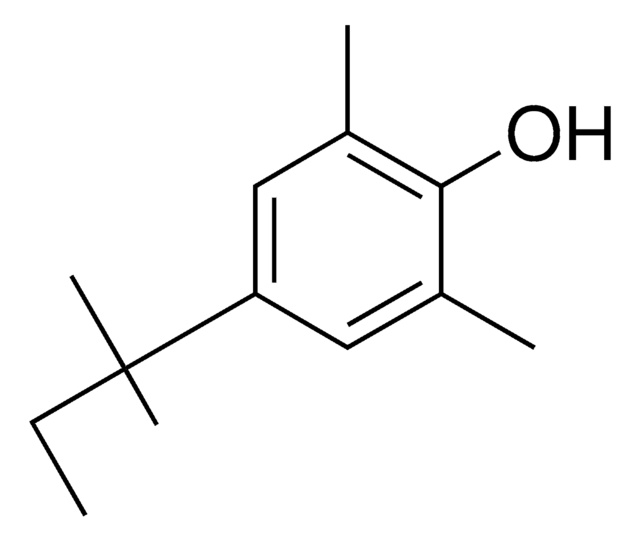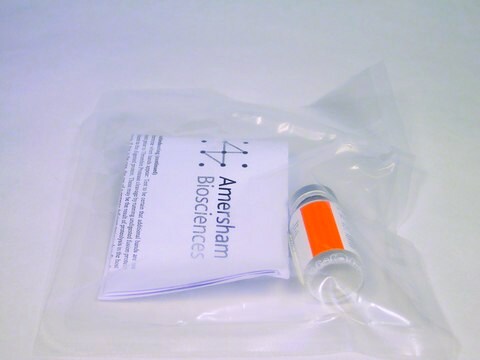Key Documents
SAE0118
TEV Protease, Biotin tagged
recombinant protein, aqueous solution
Synonim(y):
TEVp, Tobacco Etch Virus protease
About This Item
Polecane produkty
pochodzenie biologiczne
microbial (Tobacco Etch virus)
rekombinowane
expressed in E. coli
Próba
≥90%
Postać
liquid
aktywność właściwa
≥10 U/μL
metody
protein purification: suitable
przydatność
suitable for additive or modifier in the separation of proteins or peptides
Zastosowanie
life science and biopharma
Warunki transportu
wet ice
temp. przechowywania
−20°C
Opis ogólny
This biotin-tagged TEV protease is expressed in E.coli. Our Biotin-tagged TEV protease does not carry any purification tag other than biotin and is designed to be used for on-column cleavage of fusion proteins containing a TEV protease recognition sequence. This method specifically cleaves the protein of interest from a column-bound fusion protein, leaving the purification domain or tag bound to the affinity column (e.g. Ni-NTA column) and eluting only the protein of interest.
This method is advantageous to post-elution cleavage for several reasons:
- It eliminates most of the impurities normally associated with affinity purification.
- It allows much gentler elution conditions, with an added flexibility in the composition of the elution buffer. This can help to prevent protein aggregation and inactivation.
After cleavage, the biotinylated TEV protease can be removed with any avidin-conjugated or streptavidin-conjugated beads.
Biotinylation of this product is done enzymatically with no effect on its proteolytic activity. It has no other protein purification tags. The product is supplied at a concentration of =10 U/μl in an aqueous buffer containing 20 mM Tris HCl, pH 7.5, 50 mM Sodium Chloride, 1 mM TCEP, 1 mM EDTA and 50% (V/V) glycerol.
Definicja jednostki
Kod klasy składowania
10 - Combustible liquids
Klasa zagrożenia wodnego (WGK)
WGK 2
Temperatura zapłonu (°F)
Not applicable
Temperatura zapłonu (°C)
Not applicable
Certyfikaty analizy (CoA)
Poszukaj Certyfikaty analizy (CoA), wpisując numer partii/serii produktów. Numery serii i partii można znaleźć na etykiecie produktu po słowach „seria” lub „partia”.
Masz już ten produkt?
Dokumenty związane z niedawno zakupionymi produktami zostały zamieszczone w Bibliotece dokumentów.
Nasz zespół naukowców ma doświadczenie we wszystkich obszarach badań, w tym w naukach przyrodniczych, materiałoznawstwie, syntezie chemicznej, chromatografii, analityce i wielu innych dziedzinach.
Skontaktuj się z zespołem ds. pomocy technicznej








